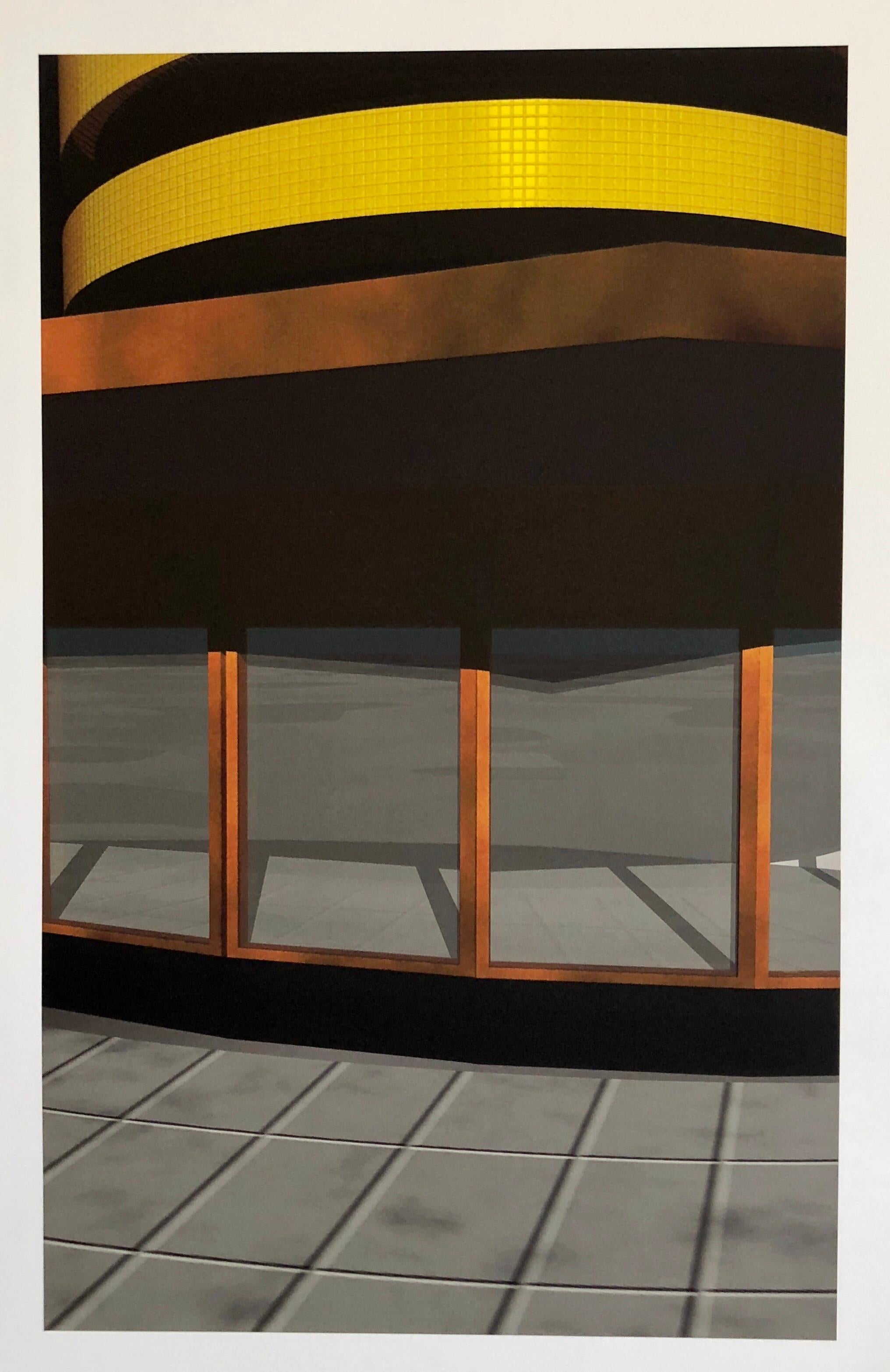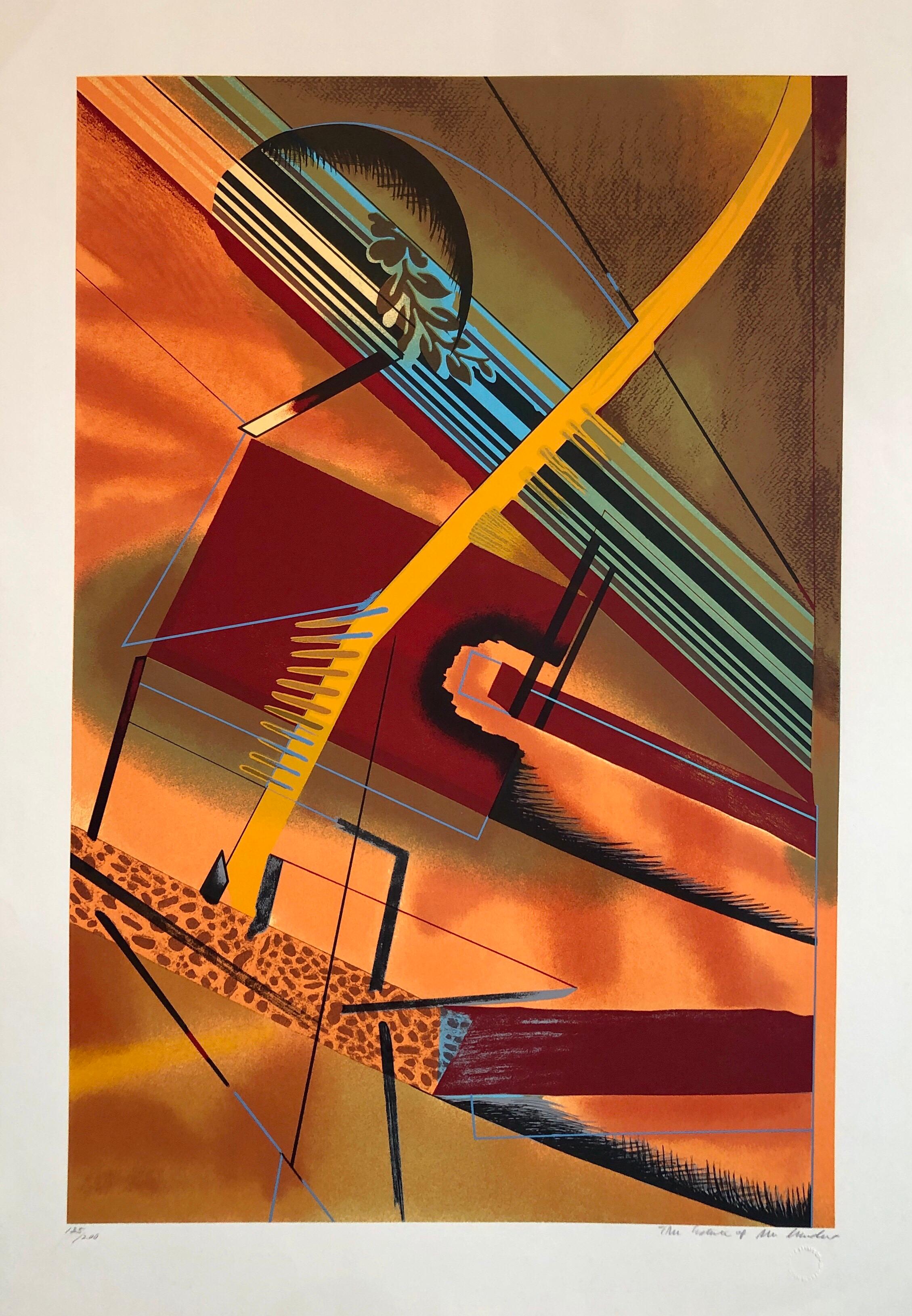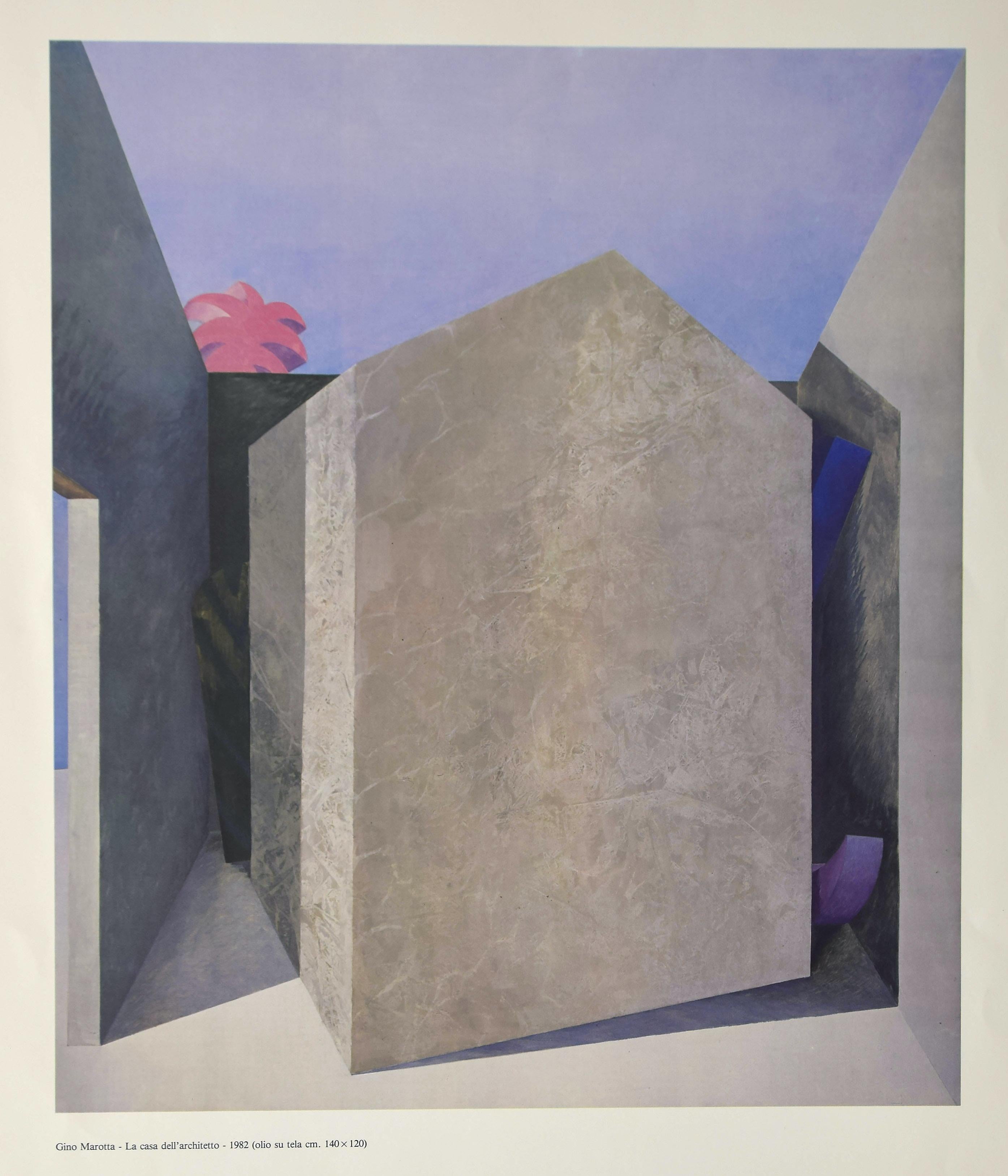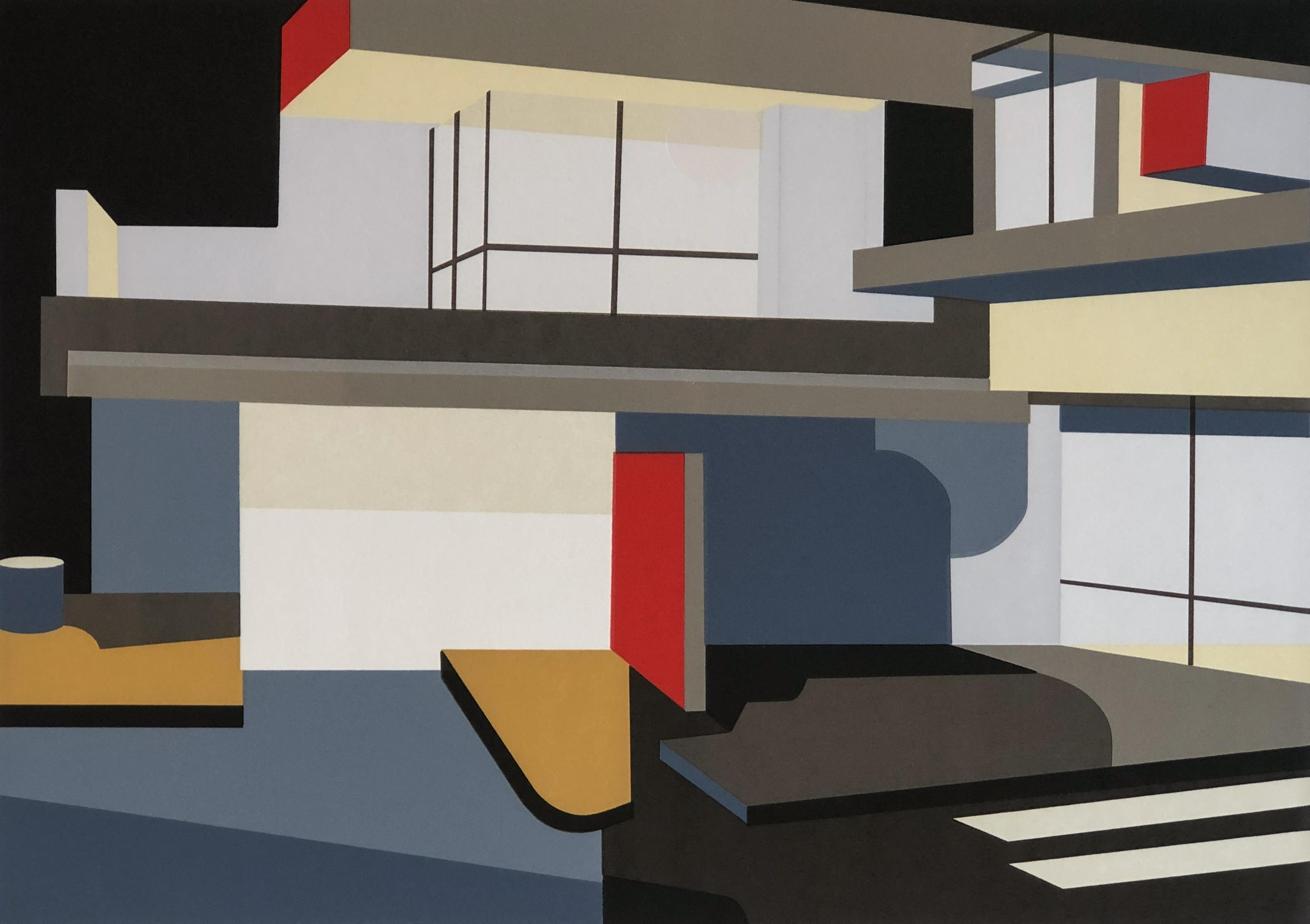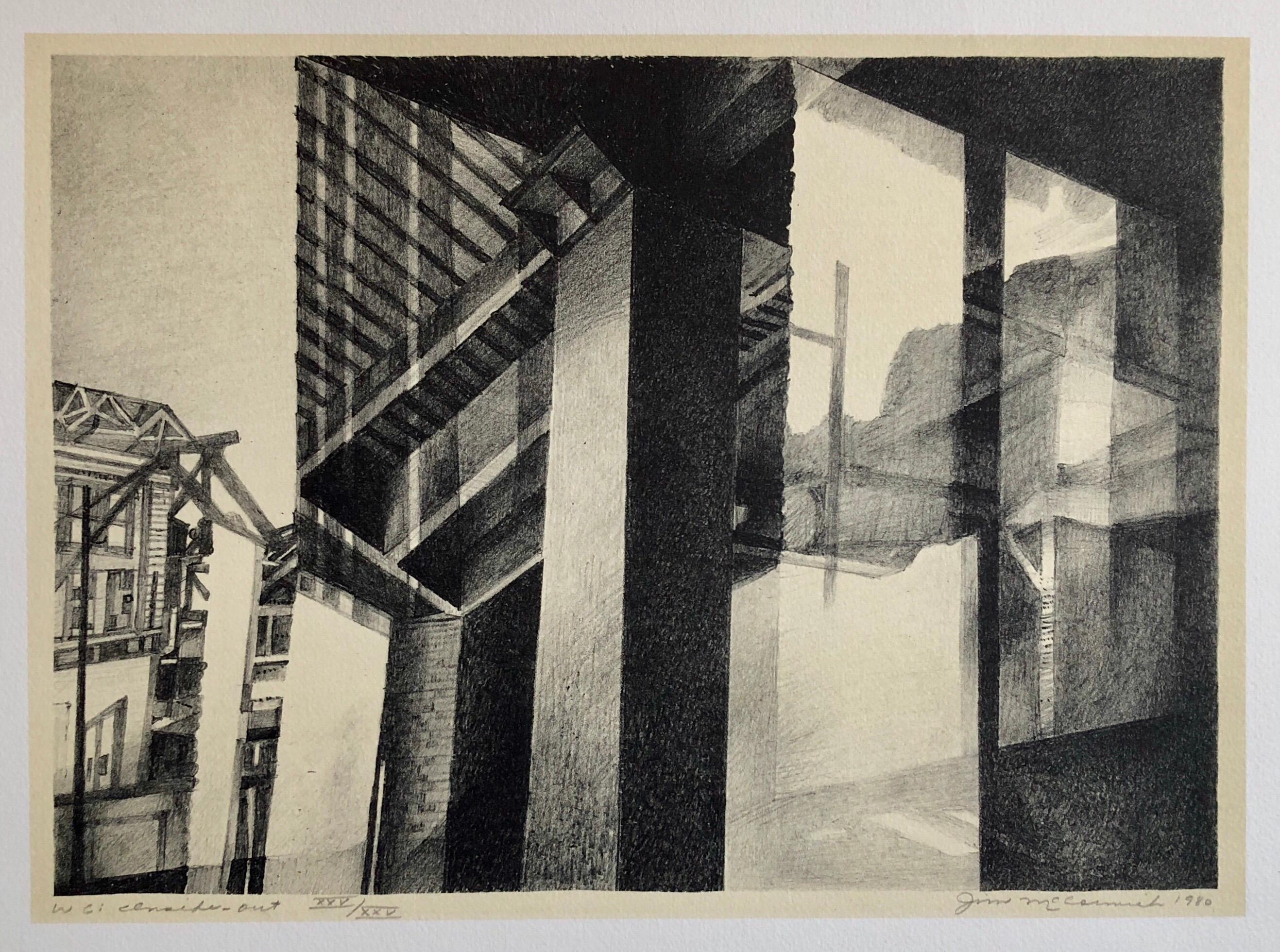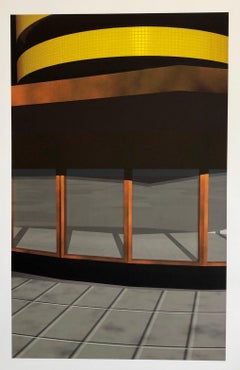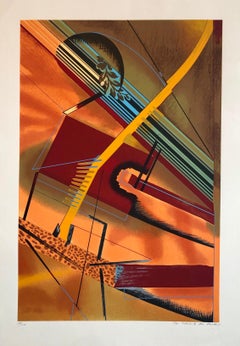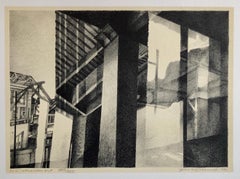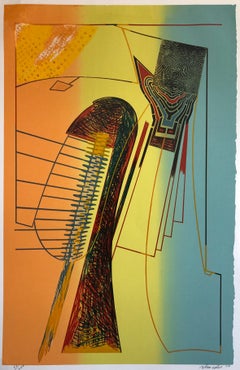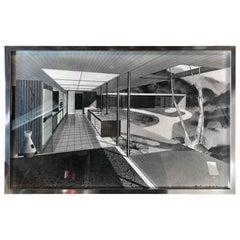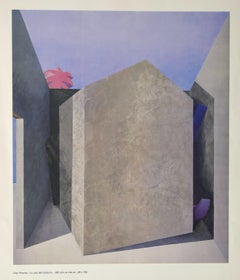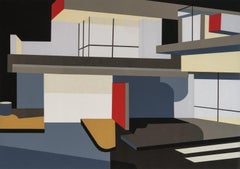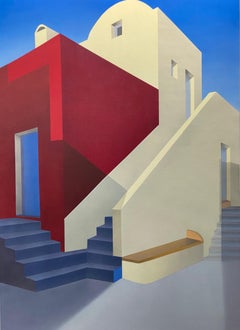Items Similar to Location Proposal Iris Print Ed. 12 Architectural Study LA CAlifornia Modernist
Want more images or videos?
Request additional images or videos from the seller
1 of 7
Cindy BernardLocation Proposal Iris Print Ed. 12 Architectural Study LA CAlifornia Modernist1997
1997
$1,200
£923.27
€1,055.07
CA$1,717.49
A$1,872.89
CHF 983.88
MX$22,447.68
NOK 12,476.53
SEK 11,610.58
DKK 7,880.23
About the Item
Cindy Bernard’s career spans nearly three decades and she is best known for photographs and projections that explore the relationship between cinema, memory, and landscape including the widely exhibited series Ask the Dust (1988-92), now in the collections of the Museum of Contemporary Art, Los Angeles (21 part set), the Pompidou, MOMA and the Whitney Museum of American Art. She is a recipient of grants and fellowships from the J. Paul Getty Trust Fund for the Visual Arts, California Arts Council, Creative Capital, Anonymous Was a Woman, the Harpo Foundation, California Community Foundation, the John Simon Guggenheim Memorial Foundation and the MacDowell Colony. Her work has been exhibited in museums and galleries in the US, Canada, Mexico, Europe, and Japan, and was included in the Whitney and Lyon Biennials.
In addition to her visual practice, Bernard takes an active interest in the spaces and production of social exchange. She was a director and advisor to Foundation for Art Resources from 1985 to 1990, a founding director of the Coalition for Freedom of Expression, and co-founder of MOCA Mobilization. Bernard is also the founder and director of The Society for the Activation of Social Space through Art and Sound (SASSAS), an organization she began in response to the need for a flexible and sustainable association dedicated to experimental music in Los Angeles. She has curated and produced more than 50 concerts for SASSAS including Welcome Inn Time Machine for Pacific Standard Time in 2012.
Her interest in sound has spurred several projects including a series of photographs of municipal band shells which Bernard sees as an architecture of public exchange and The Inquisitive Musician, an adaptation of a 17th century German satire, Musicus Curiosus, or Battalus, the Inquisitive Musician; the Struggle for Precedence between the Kunst Pfeifer and the Common Players. The Inquisitive Musician pits itinerant “beer fiddlers” against the city sanctioned “Kunstpfeifer” in an argument over who has the right to perform and be compensated. Presented as a staged reading incorporating video and live music, The Inquisitive Musician has been performed in New York, in Los Angeles at the LA County Museum of Art, and most recently at the Stedelijk Museum in Amsterdam in June 2013.
Current projects include Vinland, a meditation on the complex and continually shifting relationships between spaces, social and economic structures, and personal and collective histories and, more recently, an “episodic” series based on the history of social nudism: Your Personal View of (Social) Nudism.
Bernard is a Adjunct Professor of Graduate Fine Art at Art Center College of Art and Design and was appointed the inaugural Ruffin Distinguished Artist-In-Residence at the University of Virginia for the academic year 2013/2014. She was a 2016 National Endowment for the Arts Fellow at the MacDowell Colony and will be in residence at the UCross Foundation in 2017.
Muse X Editions. An (now defunct) LA based innovative publisher of limited-edition prints, Muse X has launched its first group of prints and is just beginning to make itself known to artists, curators, dealers and collectors. Among works just off the press are otherworldly landscapes by Barbara Kasten and Oliver Wasow, a sizzling sunset by Peter Alexander, abstract compositions by Pauline Stella Sanchez and Jennifer Steinkamp, text and photo combinations by Bill Barminski and Nancy Dwyer, and conceptual photographs by Kevin Hanley. Doug Aitken, Polly Apfelbaum, David Levinthal, Richard Long, Christian Marclay, Alyson Shotz, Uta Barth all have published with them.
She was included in the The MOCA Photography Portfolio curated by Cindy Sherman which included Lyle Ashton Harris and Shirin Neshat amongst others, to celebrate the 20th Anniversary of The Museum of Contemporary Art, Los Angeles. Muse [X] Editions, 1999. Ten Fujicolor Crystal Archive prints.
- Creator:Cindy Bernard (1959, American)
- Creation Year:1997
- Dimensions:Height: 23.5 in (59.69 cm)Width: 16 in (40.64 cm)
- Movement & Style:
- Period:
- Condition:
- Gallery Location:Surfside, FL
- Reference Number:1stDibs: LU38213475022
About the Seller
4.9
Platinum Seller
Premium sellers with a 4.7+ rating and 24-hour response times
Established in 1995
1stDibs seller since 2014
1,837 sales on 1stDibs
Typical response time: 1 hour
- ShippingRetrieving quote...Shipping from: Surfside, FL
- Return Policy
More From This Seller
View AllLocation Proposal Iris Print Ed. 12 Hand Signed Architectural Study
By Cindy Bernard
Located in Surfside, FL
Cindy Bernard’s career spans nearly three decades and she is best known for photographs and projections that explore the relationship between cinema, memory, and landscape including the widely exhibited series Ask the Dust (1988-92), now in the collections of the Museum of Contemporary Art, Los Angeles (21 part set), the Pompidou, MOMA and the Whitney Museum of American Art. She is a recipient of grants and fellowships from the J. Paul Getty Trust Fund for the Visual Arts, California Arts Council, Creative Capital, Anonymous Was a Woman, the Harpo Foundation, California Community Foundation, the John Simon Guggenheim Memorial Foundation and the MacDowell Colony. Her work has been exhibited in museums and galleries in the US, Canada, Mexico, Europe, and Japan, and was included in the Whitney and Lyon Biennials.
In addition to her visual practice, Bernard takes an active interest in the spaces and production of social exchange. She was a director and advisor to Foundation for Art Resources from 1985 to 1990, a founding director of the Coalition for Freedom of Expression, and co-founder of MOCA Mobilization. Bernard is also the founder and director of The Society for the Activation of Social Space through Art and Sound (SASSAS), an organization she began in response to the need for a flexible and sustainable association dedicated to experimental music in Los Angeles. She has curated and produced more than 50 concerts for SASSAS including Welcome Inn Time Machine for Pacific Standard Time in 2012.
Her interest in sound has spurred several projects including a series of photographs of municipal band shells which Bernard sees as an architecture of public exchange and The Inquisitive Musician, an adaptation of a 17th century German satire, Musicus Curiosus, or Battalus, the Inquisitive Musician; the Struggle for Precedence between the Kunst Pfeifer and the Common Players. The Inquisitive Musician pits itinerant “beer fiddlers” against the city sanctioned “Kunstpfeifer” in an argument over who has the right to perform and be compensated. Presented as a staged reading incorporating video and live music, The Inquisitive Musician has been performed in New York, in Los Angeles at the LA County Museum of Art, and most recently at the Stedelijk Museum in Amsterdam in June 2013.
Current projects include Vinland, a meditation on the complex and continually shifting relationships between spaces, social and economic structures, and personal and collective histories and, more recently, an “episodic” series based on the history of social nudism: Your Personal View of (Social) Nudism.
Bernard is a Adjunct Professor of Graduate Fine Art at Art Center College of Art and Design and was appointed the inaugural Ruffin Distinguished Artist-In-Residence at the University of Virginia for the academic year 2013/2014. She was a 2016 National Endowment for the Arts Fellow at the MacDowell Colony and will be in residence at the UCross Foundation in 2017.
Muse X Editions. An (now defunct) LA based innovative publisher of limited-edition prints, Muse X has launched its first group of prints and is just beginning to make itself known to artists, curators, dealers and collectors. Among works just off the press are otherworldly landscapes by Barbara Kasten and Oliver Wasow, a sizzling sunset by Peter Alexander, abstract compositions by Pauline Stella Sanchez and Jennifer Steinkamp, text and photo combinations by Bill Barminski and Nancy Dwyer...
Category
1990s American Modern Landscape Prints
Materials
Color
Surrealist Architectural Landscape Silkscreen 1970s Chicago Modernist Lithograph
By William Schwedler
Located in Surfside, FL
Orange, Turquoise, Red, Surrealist abstract.
This serigraph has never been framed. It is pencil signed by hand "the estate of Wm Schwedler" and numbered in pencil from the limited ed...
Category
1970s American Modern Abstract Prints
Materials
Screen
Chicago Scene Modernist Architectural Lithograph, Nevada Artist
Located in Surfside, FL
Jim McCormick was born in Chicago in 1936. He attended the University of Tulsa where he received a bachelor’s degree in art in 1958, then a M.A. in paint...
Category
1980s American Modern Abstract Prints
Materials
Lithograph
Surrealist Architectural Landscape "Fall for it" 1970s Chicago Modernist
By William Schwedler
Located in Surfside, FL
This serigraph has never been framed.
Chicago born Modernist. Showed at Andrew Crispo Gallery and Tibor de Nagy Gallery. Schwedler could not help but be influenced by the local artistic milieu particularly with those contemporaries and friends who formed the Hairy Who in the Mid - 1960's
Schwedler's Paintings from the beginning to his young end were ripe with a surreal, abstract poetry filled with references to landscapes, architecture, texture (cracked), line (broken,chopped, and Pulled to pieces), and delicate, but voluptuous color. Studying at the Art institute of Chicago with his friends Cynthia Carlson, Jim Nutt...
Category
1970s American Modern Abstract Prints
Materials
Screen
Night Light Signed Aquatint Etching California Modernist Woman Artist Susan Hall
By Susan Hall
Located in Surfside, FL
Susan Hall
Hand signed and numbered
Aquatint Etching
This piece has a Memphis Milano sort of vibe to it.
Susan Hall lives and works in Point Reyes Station, California, a town in the heart of the Point Reyes National Seashore. This pristine wilderness area is dominated by a mosaic of bays and ocean, rolling grass lands and forests. It is inhabited by a diversity of wildlife, including over 450 species of birds, mountains lions, deer, bobcats, foxes, and elk. Ms. Hall who is a native of this area returned after spending twenty years in New York City.
In her book, “Painting Point Reyes”, Hall says, “Point Reyes is the center of my painting life. Point Reyes has been my life and when I haven’t lived here, it has been an underground stream that spoke to me in dreams and visions.”
While living and painting in New York City, Ms. Hall exhibited her work widely in museums and galleries. Among them are the Whitney Museum of Art; San Francisco Museum of Art; Nancy Hoffman Gallery, Trabia MacAfee Gallery, Phyllis Kind Gallery, Chicago; Ovsey Gallery, Los Angeles.
In addition, her work has been featured in group exhibitions throughout the United States and abroad, including in 2020 Bud Shark's Ink: The California Crew at BMoCA, Boulder Museum of Contemporary Art Colorado USA representing the panoply of aesthetics, cultural backgrounds, viewpoints, and talent held within the bounty of art “made in California.” This remarkable grouping of artists, Brad Brown, Enrique Chagoya, Roy De Forest, Amy Ellingson, Susan Hall, Don Ed Hardy, Mildred Howard, Robert Hudson, Hung Liu, Kara Maria, Rex Ray, Alison Saar, Italo Scanga, and William T. Wiley.
Women to the Fore, Hudson River Museum Yonkers 2021
A group of women artists working in oil painting and drawing, lithograph prints and photograph, collage and sculpture. Many icons of feminist art history. Judy Chicago, Judy Giera, Marisol, and Shanequa Benitez, Ann McCoy, Anna Walinska, Audrey Flack, Barbara Morgan, Berenice Abbott,
Bessie Potter Vonnoh, Georgia O'Keeffe, Hannelore Baron, Harriet, Judy Chicago, Louise Nevelson, Marisol, Mary Frank, Nancy Graves, Susan Hall, Yvonne Thomas...
Category
1970s American Modern Abstract Prints
Materials
Etching, Aquatint
Israeli Modern Pop Art Photo Silkscreen Serigraph Palm Trees Kadishman
By Menashe Kadishman
Located in Surfside, FL
Menashe Kadishman was born in Tel-Aviv in 1932. He is a Graduate of St. Martin's School of Art, University of London Studies with Anthony Caro, Reg Butler. From 1947 to 1950, Kadish...
Category
1970s Abstract Geometric Landscape Prints
Materials
Etching, Aquatint, Lithograph
You May Also Like
Stunning Modernist Architectural Rendering, Drawing by G.F.Hahn
Located in Buffalo, NY
Original MCM Pen and ink architectural study for a Palm Springs Residence (unbuilt). Framed and signed; J.H.Hahn, Reminiscent of the famed Dinah Shore hous...
Category
Mid-20th Century American Mid-Century Modern Paintings
Materials
Lead
The House of the Architect - Vintage Poster After G. Marotta - 1982
Located in Roma, IT
Vintage offset poster realized by Galleria Rondanini, Roma, in 1982 in occasion of the Exhibition of Gino Marotta's works.
Category
1980s Contemporary Figurative Prints
Materials
Offset
$149 Sale Price
30% Off
Modernist and mid-century architecture - Schindler House, Relief Print
By Andy Burgess
Located in London, GB
ANDY BURGESS
Schindler House, 2019
Signed, dated, numbered (A/P) recto
Relief Print
43.2 x 55.9 cm
17 x 22 in.
Framed:
18 ½ x 1 ½ x 22 ½ in.
Artist's Proof 6 of 20
-----
Andy Burgess is a London-born artist currently residing in Tucson, Arizona. Represented for many years by The Cynthia Corbett...
Category
2010s American Modern More Prints
Materials
Lithograph
American Contemporary Art by Elena Borstein - Thira Sunrise II
By Elena Borstein
Located in Paris, IDF
Acrylic on canvas
Elena Borstein currently lives and works in New York City and the Adirondack Mountains. Born in Hartford, Connecticut, She received her B.S. Degree from Skidmore ...
Category
2010s Contemporary Landscape Paintings
Materials
Canvas, Acrylic
Modernist architecture, Wexler Steel House Entrance II, 2017
By Andy Burgess
Located in London, GB
Signed, titled, dated verso in ink
Acrylic on Canvas Mounted on Panel
76.2 x 101.6 cm
30 x 40 in.
(AB228)
Andy Burgess is known for his renditions of modernist and mid-century archi...
Category
2010s Post-Modern Landscape Paintings
Materials
Canvas, Ink, Acrylic, Panel
Winged Victory of Los Angeles
Located in Los Angeles, CA
Winged Victory of Los Angeles, c. 1960, oil on masonite, signed lower right, artist’s name and title verso, 33 x 34 1/2 inches, exhibited: 1) Edward Biberman, Heritage Gallery, Los A...
Category
1960s American Modern Landscape Paintings
Materials
Masonite, Oil
More Ways To Browse
Time Machine
17th Century German
R Marsh
Richard Devonshire
Rowland Langmaid
Sncf Dali
Spring Song Vintage Print
Thomas Moran Etching
Used Porta John
Valerie Thornton
Vintage United Airlines Travel Posters
William Stafford
Adolphe Beaufrere
African American Poster
Altman Luxembourg Lithograph
Ana Popescu
Aquatint India
Bernard Buffet Canal
